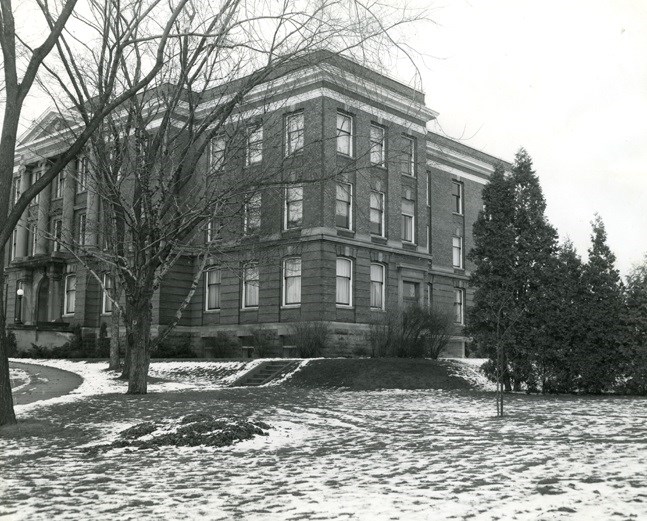EDITOR'S NOTE: This is Part 2, of the story of the murder of a mother and her young son at Pancake Bay. Read Part 1 here
From the archives of the Sault Ste. Marie Public Library:
In 1947, Edgar Simons was arrested and charged with the grisly murders of Catharine and Frederick Lee Rupert, a mother and son who were found dead at their Pancake Bay tourist lodge.
The trial for the murder of Catharine Rupert began in October of 1947, with a special prosecutor brought in from the office of the Attorney General; A.A. Wishart assisted with the prosecution, and I.A. Vannini was the defense lawyer representing Simons.
Due to the lack of a motive, discussions during his trial turned to his mental state: Simons himself pleaded “not guilty by reason of provocation and insanity at the time of the alleged crime.”
One doctor testified there was no indication that Simons was mentally ill. Another described him as “a second-grade moron,” elaborating that he may have been “insane at the time of the murder to the extent that he did not appreciate the nature or quality of his act or know what he was doing was wrong.”
The latter doctor cited his word choice, which resembled that of a child, and his calm demeanor in jail as evidence.
Simons’ family history was also brought up: a sex crime case between his father and his sister, a murder-suicide committed by his uncle, and a great-aunt committed to an asylum. The defense lawyer, supported by one psychiatrist, argued that Simons’ behavior may have been the result of a hereditary mental disease.
In addition to the heartbreaking nature of the case, the trial itself was not without its unfortunate events. One of the jurors suffered a “heart seizure,” and his illness stalled the trial as a new jury was selected and the trial was restarted.
Many witnesses had to testify for a second time – including the devastated Frederick Rupert. The Sault Star commented that “the horror-stricken memories . . . must have cut through him like a razor edged knife.”
The matter of the dining room also came up over the course of the trial. After committing the murders, Simons had gone to the neighbours to telephone the police, claiming to have a tip about the dining room fire. However, he apparently never shared what information he had. He always maintained that he had not set the dining room on fire, and Frederick Rupert claimed never to have suspected him.
Nevertheless, defense lawyer Vannini felt that the fire might be a mitigating factor in the trial. Perhaps, he argued, Catharine Rupert had accused Simons of burning the dining room, just prior to the shooting. In that case, Simons would have been provoked, and he may have committed manslaughter instead of murder.
However, that argument did not hold up in court, with the judge determining it was not a legitimate defense. He advised the jury not to consider manslaughter, told them that the only possible defense was insanity – and then went on to outline all of the reasons why he felt Simons may have been of sound mind at the time of the murders.
With all of the final arguments made, the case went to the jury. Ultimately, after three and a half hours of deliberation, the jury reached a verdict. They delivered it to a packed court – so full of spectators that people were being refused entry at the door. The jury found Simons guilty of murder and sentenced him to death by hanging.
Simons provided no comment following the sentencing, however there was a clear shift in his attitude. The Sault Star described his behavior as being less “arrogant” than usual on his way out to the police car. He “was very pale and his head was bowed.”
There was an appeal to his sentencing. If it was successful, he would be tried again for the murder of Catharine Rupert – and if he was found not-guilty of that murder, he would be tried for the murder of Frederick Lee.
If he was still shaken about his sentencing, Simons didn’t show it. He seemed optimistic about his future, with a fellow prisoner describing him to the Globe and Mail as being “a wonder,” and saying, “You would never know he was facing the gallows.”
The appeal was dismissed; attempts to commute his death sentence failed. On January 21, 1948, in the middle of the night, Simons was brought to the gallows, shaking with nerves, singing the hymn “O Lord Here I Come.” He was the first person to be hanged in Sault Ste. Marie in 46 years.
Each week, the Sault Ste. Marie Public Library and its Archives provides SooToday readers with a glimpse of the city’s past.
Find out more of what the Public Library has to offer at www.ssmpl.ca and look for more Remember This? columns here
